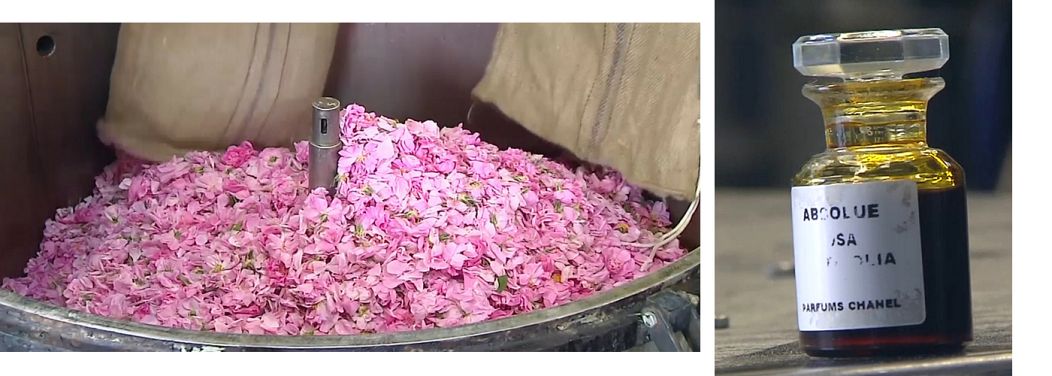There wouldn't be Chanel No 5 as we know it without the addition of this delicate pink rose.
The harvest of centifolia rose, a key ingredient to the world's most famous perfume, is in full swing in southern France.
Thanks to a unique micro-climate and to the terrain's special features, flower fields around Grasse produce unique fragrant essences and raw materials that are at the basis of countless perfumes the world over. One of them is the Mul Family Estate in Pegomas. They have the exclusivity to produce these flowers for Chanel.
"These flower fields are very important for us because they're the same that provided the ingredients for perfume Chanel No 5 when it was created," said Chanel's head perfumer, Olivier Polge. "No 5 was made with the jasmine and roses that grow here and that possess a very special and distinct olfactory quality. This is why over the years we've made sure to keep this quality that contributes to No 5's hallmark," explained Mr Polge.
The rose may also be cultivated elsewhere in the world, but fragrance experts say only the unique variety produced in these fields gives the exact same scent of the original Chanel No 5.
Extracting the aroma
Sixty seasonal workers are employed at the Maison Mul fields during the rose harvest. The job is entirely conducted by hand, whilst "the process is a rush against time in the effort to retain the strongest smell of the roses in bloom," said the Mul Family Estate farming director Fabrice Bianchi.
Right after the harvest, the rose petals are put into burlap sacks and swiftly brought to the nearby Sotraflor factory. They are given solvent hexane in order to capture the rose's precious aromatic materials. The union between petals and hexane generates the "concrete", a brown, semi-solid material. Ethyl alcohol is then added to the concrete in order to separate the wax from the aromatic materials.
What remains is the absolute, a very powerful fragrance. employed in perfumery and in the making of Chanel No 5.












